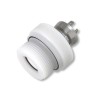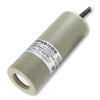Brackish water depth and level sensors with housing material for use with tidal and coastal sea water.
These sensors are suitable for sustained immersion in waters which contain a mixture of freshwater and seawater, such as coastal estuaries where rivers meet the sea.
The housings of these sensors are made from metal alloys which are highly resistant to saltwater corrosion.
Products
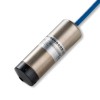 LMK458 Marine Approved Hydrostatic Level Transmitter - Marine approved level transmitter with 4-20mA output for measuring level of contents inside ship ballast, fuel, liquid cargo or wastewater tanks
LMK458 Marine Approved Hydrostatic Level Transmitter - Marine approved level transmitter with 4-20mA output for measuring level of contents inside ship ballast, fuel, liquid cargo or wastewater tanks LMK 487 Submersible Ballast Tank and Draught Level Pressure Transmitter - A 22mm diameter titanium body seawater depth and level probe with a 4-20mA output with Lloyds and DNV-GL ship approval, for monitoring the quantity of ballast or the draft of a ship’s hull.
LMK 487 Submersible Ballast Tank and Draught Level Pressure Transmitter - A 22mm diameter titanium body seawater depth and level probe with a 4-20mA output with Lloyds and DNV-GL ship approval, for monitoring the quantity of ballast or the draft of a ship’s hull.
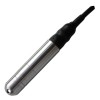 IMCTL Submersible Liquid Level and Temperature Transmitter
IMCTL Submersible Liquid Level and Temperature Transmitter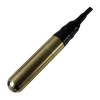 SWL Marine Bronze Submersible Level Sensor
SWL Marine Bronze Submersible Level Sensor S12C SDI-12 Seawater Pressure & Temperature Transducer
S12C SDI-12 Seawater Pressure & Temperature Transducer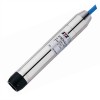 ATM/N Titanium Submersible Hydrostatic Pressure Transmitter
ATM/N Titanium Submersible Hydrostatic Pressure Transmitter
Applications
 50m seawater depth and temperature sensor with SDI-12 - SDI-12 digital interface liquid level and temperature sensor for submerging in seawater water to depth of up to 50 metres.
50m seawater depth and temperature sensor with SDI-12 - SDI-12 digital interface liquid level and temperature sensor for submerging in seawater water to depth of up to 50 metres. Floating dry dock ballast tank 14ft range 4-20mA output submersible seawater level sensor - A seawater compatible liquid level sensor for submerging in a floating dry dock ballast tank and measuring the depth over a range of 0 to 14ft from the nose cone, and sending the corresponding 4-20mA signal through the submersible cable electrical connection.
Floating dry dock ballast tank 14ft range 4-20mA output submersible seawater level sensor - A seawater compatible liquid level sensor for submerging in a floating dry dock ballast tank and measuring the depth over a range of 0 to 14ft from the nose cone, and sending the corresponding 4-20mA signal through the submersible cable electrical connection.
 Desalination plant seawater feed tanks 5m range 4-20mA output submersible level sensor
Desalination plant seawater feed tanks 5m range 4-20mA output submersible level sensor 10ft range 4-20mA output submersible sea tide depth sensor
10ft range 4-20mA output submersible sea tide depth sensor 3m range 4-20mA output submersible seawater dewatering tank level sensor
3m range 4-20mA output submersible seawater dewatering tank level sensor 9m 4-20mA ship fish storage seawater storage tank submersible level sensor
9m 4-20mA ship fish storage seawater storage tank submersible level sensor
- 5m range 4-20mA output submersible seawater intake channel level sensor
- Underwater 50 metre sea depth 4-20mA output sensor
- 6m deep ballast tank level transmitter with marine certificate
- 100 meter IP68 sea water level transmitter with Marine & ATEX approval
- Dockside sea water tide level transmitter up to 6 metres depth
- DNV / GL marine certified submersible seawater level transmitter for 0-3 metre depth
Product Types
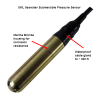 Seawater Hydrostatic Liquid Level Sensors - Hydrostatic level sensors which are suitable for immersing in seawater for long periods to monitor depth and tidal changes.
Seawater Hydrostatic Liquid Level Sensors - Hydrostatic level sensors which are suitable for immersing in seawater for long periods to monitor depth and tidal changes.
Related Product and Application Guides
Related Help Guides
- Measuring liquid level in a sealed tank with a hydrostatic pressure sensor
- Using a screw-in or waterproof pressure transmitter to measure liquid level
- Measuring the volume of liquid in a horizontal cylinder tank
- Improve the electrical termination of vented submersible pressure sensors
- Difference between vented and non-vented water level measurement
- Determining water tank volume using hydrostatic pressure
- How to reduce submersible pressure sensor failures caused by moisture ingress
- Using absolute pressure sensors to measure hydrostatic level
- Determining the hydrostatic pressure range for a tank level sensor
- Considerations for monitoring Landfill Water Level
- Why are Submersible applications so demanding of Pressure Transducers?
- Stop sea water level or depth sensor failures due to pitting or corrosion


